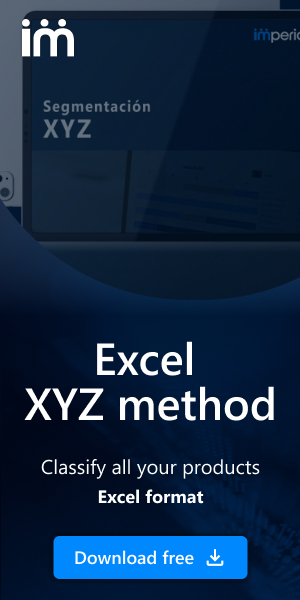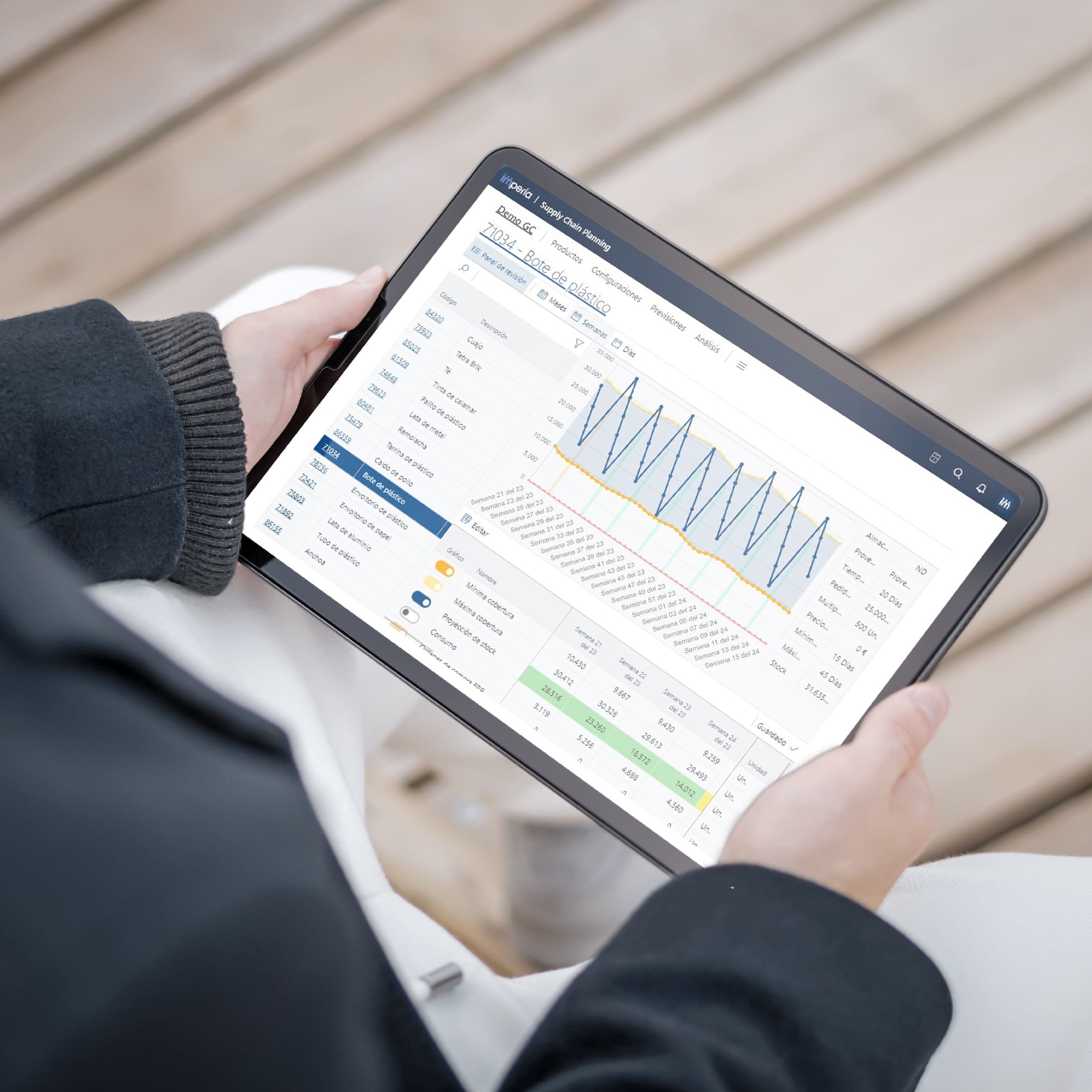In this article, we will delve into the concept of Vendor Management Inventory (VMI) and its relevance in supply chain management. From what it is, how it works, and the benefits it can bring to companies that implement it. Additionally, we will thoroughly analyze how to implement this strategy and the challenges that may arise in the process. Let's get started!
What is VMI and how does it work?
Vendor Management Inventory (VMI) is a strategy that aims to optimize the relationship between a supplier and a customer by allowing the supplier to have greater control over the customer’s inventory. Under this model, the supplier is responsible for proactively monitoring and replenishing the customer’s inventory based on real-time demand data. This means that the supplier takes a more active role in inventory planning and management, which can result in greater efficiency and lower costs for both parties.
In simple terms, VMI involves a close collaboration between the supplier and the customer, where the supplier becomes a strategic partner in inventory management. Instead of the customer manually or periodically placing replenishment orders, the supplier uses historical and real-time demand data to anticipate the customer's needs and ensure that inventory is available when needed.
The operation of Vendor Management Inventory (VMI) is based on the exchange of data between the supplier and the customer, including information on sales, inventory levels, demand forecasts, and other relevant factors. With this information, the supplier can make decisions about how much and when to replenish the customer's inventory, avoiding both shortages and overstocking.
Although it offers many benefits, such as greater inventory availability and lower storage costs, it also presents some challenges. For example, implementing VMI requires investment in technology and human resources, and a solid trust relationship between both parties. Additionally, data sharing can raise concerns about privacy and information security.
4 Benefits of VMI in the Supply Chain
Vendor Management Inventory offers a series of benefits to companies that implement it. From greater inventory optimization to improved relationships with their suppliers, VMI has become a strategy used by many companies to maximize their operational efficiency and reduce costs. Here are some of the benefits it can provide:
Inventory Optimization
One of the main advantages of VMI is its ability to optimize inventory by keeping stock levels aligned with actual demand. By enabling more precise replenishment, companies can reduce both shortages and excess inventory, leading to more efficient resource management and greater product availability for customers.
Cost Reduction
It can also help reduce costs associated with inventory, storage, and overall supply chain management. By minimizing excess inventory levels and associated storage costs, companies can improve their profitability and maintain competitive margins.
Improvement in Operational Efficiency
By automating and optimizing inventory replenishment processes, Vendor Management Inventory can enhance operational efficiency throughout the supply chain. This translates into faster delivery times, reduced downtime, and a greater ability to respond to demand fluctuations, allowing companies to quickly adapt to market conditions and maintain high levels of customer service.
Stronger Relationships with Suppliers
VMI fosters closer collaboration and more transparent communication between suppliers and customers. By working closely with suppliers to manage inventory, companies can build stronger, more trusting relationships, which can lead to better commercial terms, more competitive pricing, and greater flexibility in the supply chain.
Implementing Vendor Management Inventory
Successful implementation of Vendor Management Inventory (VMI) requires planning and a well-defined strategy. First, companies must establish close collaboration with their suppliers and clear agreements on responsibilities and expectations. It is crucial to define inventory parameters, service levels, and KPIs to measure implementation success.
Secondly, companies must choose which technologies to use to facilitate VMI implementation. Supply Chain Management (SCM) solutions and specialized VMI software are essential tools that can help automate and optimize inventory management processes. These solutions provide real-time visibility into stock levels, enable real-time collaboration with suppliers, and facilitate data exchange and reporting to evaluate performance.
Therefore, implementing Vendor Management Inventory requires a combination of collaboration with suppliers, clear definition of goals and processes, and the use of appropriate technologies.
Challenges and Considerations in Implementing VMI
Implementing Vendor Management Inventory involves several challenges that companies must address to ensure its success. These challenges include dependence on technology, risk management, and data security. It is crucial to proactively address these challenges to maximize the benefits of VMI and minimize potential risks.
Dependence on Technology
Implementing VMI involves adopting and using supply chain management technologies. However, this dependence on technology can be challenging for companies that lack adequate infrastructure or necessary expertise. Lack of proper training and resources can hinder the implementation and maintenance of the VMI system, negatively affecting its performance.
Integration with Existing Systems
Another major challenge in implementing Vendor Management Inventory is integrating it with the company’s existing systems, such as inventory management systems and ERP systems. Lack of interoperability between these systems can hinder communication and data transfer between different platforms, leading to synchronization and accuracy issues in inventory management. It is crucial to ensure effective integration with existing systems to guarantee smooth and trouble-free implementation.
Need for Close Collaboration with Suppliers
The success of VMI heavily depends on close collaboration and continuous communication with suppliers. However, establishing and maintaining this collaboration can be challenging, especially when managing relationships with multiple suppliers. It is essential to establish strong, trusting relationships with suppliers and ensure open and transparent communication at all times.
Risk Management and Data Security
Implementing Vendor Management Inventory also poses challenges in terms of risk management and data security. The exchange of sensitive and critical information between the company and its suppliers can increase the risk of exposure to cyber-attacks, data loss, or privacy breaches. It is crucial to implement robust security measures and risk management protocols to protect data and ensure the integrity and confidentiality of information at all times.
VMI: A Different Way to Manage Your Inventory
In conclusion, Vendor Management Inventory (VMI) emerges as a new strategy in supply chain management, offering significant benefits to companies that decide to implement it and improving their efficiency. Although it presents challenges, such as dependence on technology or the need for a highly trusted relationship with suppliers, these obstacles can be overcome with the right tools and solutions.
At Imperia, we offer a comprehensive solution that enables supply chain management with a 360-degree view, providing real-time data and making accurate forecasts that aid strategic decision-making. Thanks to its integration capability with any ERP and easy implementation, we can facilitate VMI adoption and help companies increase their competitiveness. Contact our experts and request a free demo to discover the full potential of our Supply Chain Planning software.

Enter your email and download the content
In supply chain management, identifying key elements that require special attention can make the difference between success and failure.





























































 Imperia_thumbnail.jpg)





















